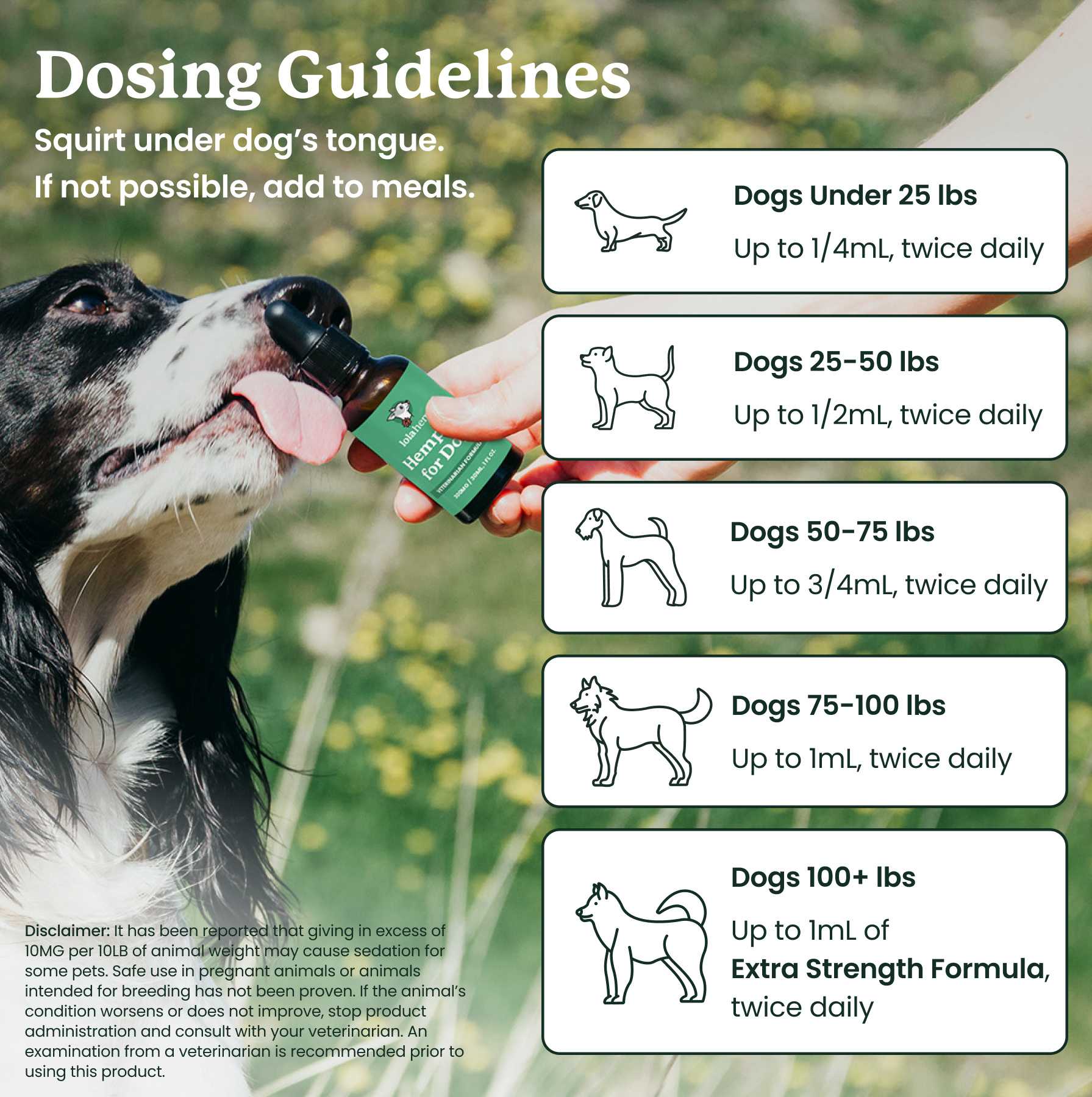When your dog has epilepsy, it's a journey filled with ups and downs. Starting phenobarbital, a common anti-seizure medication, might give you hope. But if the seizures keep happening, it can be disheartening.
It's time to sit, stay, and learn about the next steps in your pup's epilepsy treatment. We'll fetch new ideas and tricks to help your furry friend, even groundbreaking natural options, proving that when it comes to beating seizures, you can indeed teach an old dog new tricks.
- What Are Seizures?
- Treating Epilepsy in Dogs with Phenobarbital
- When Your Dog's Seizures Don't Stop on Phenobarbital
- Adjusting the Treatment Plan
- Beyond Phenobarbital: Other Options for Seizure Control
- Making the Right Choice
- Living Well with an Epileptic Dog
- On-Time, Every Time with the Medication
- Frequently Asked Questions About phenobarbital for dogs
- How long does it take for phenobarbital to start working in dogs?
- What should I do if my dog has a breakthrough seizure on phenobarbital?
- Can phenobarbital and potassium bromide be used together?
- What side effects should I monitor while my dog is on phenobarbital?
- Are there alternatives if phenobarbital doesn’t control my dog’s seizures?
What Are Seizures?
A seizure occurs when there's unusual electrical activity in your dog's brain. During a seizure, your dog might shake, lose control of their body, or act strangely. It can be frightening to watch, but most seizures don't hurt your dog.
Dogs can have different kinds of seizure disorders. Generalized seizures affect the whole body. Your dog might fall over and shake all over. Cluster seizures are when several seizures occur close together. This can be more serious.
Seizures that happen because of something outside the dog's brain, like eating something bad, are called reactive seizures. Seizures that come from problems inside the brain are called structural seizures. Many dogs have idiopathic epilepsy, which means doctors can't find a clear cause.
Treating Epilepsy in Dogs with Phenobarbital
When your dog has epilepsy, your vet will likely suggest an anti-seizure medication to help control the seizures. One common drug is called phenobarbital. It helps many dogs have fewer seizures or stop having them altogether.

How Phenobarbital Works
Phenobarbital has been used for years and helps many epileptic dogs. This medicine works by calming the brain. It slows down the electrical signals that cause seizures. When these signals slow down, seizures are less likely to happen.
It's good at stopping both generalized seizures and cluster seizures. For many dogs, it can cut down on how often seizures occur.
Giving Your Dog Phenobarbital
Getting the right dose is key. Your vet will determine how much phenobarbital your dog needs based on their weight. Most dogs take it twice a day. It's important to give it at the same time each day. This keeps the drug level steady in your dog's body.
When you start phenobarbital, your vet might use a loading dose. This is a higher dose at first to get the drug working faster. After that, you'll switch to the regular dose.
You'll need to be patient. It can take a few weeks for phenobarbital to reach its full effect. During this time, your dog might still have some seizures. Don't worry, this doesn't mean the drug isn't working.
Getting the Dose Right
Your vet will do blood tests to check the phenobarbital levels in your dog's body. This helps make sure the dose is right. The goal is to keep the drug in what's called the therapeutic range. This means there's enough in the body to stop seizures, but not so much that it causes problems.
These blood tests are crucial. They help your vet adjust the dose if needed. If the level is too low, your dog might still have seizures. If it's too high, there could be side effects.
You'll need to bring your dog in for blood tests regularly. At first, this might be every few weeks. Once the dose is stable, you might only need tests every six months or so.
Side Effects to Watch For
Like all drugs, phenobarbital can cause side effects. Many dogs get used to the drug over time and side effects lessen. But it's good to know what to look out for.
1. Increased Thirst and Hunger
Your dog might drink and eat more than usual. This is normal but can lead to weight gain if you're not careful.
2. Sleepiness
Some dogs get drowsy, especially when first starting the drug. This often gets better with time.
3. Unsteadiness
Your dog might seem frail, especially at first. This usually improves as they get used to the medicine.
4. Liver Concerns
One big concern with phenobarbital is its effect on the liver. Over time, it can cause liver disease such as liver toxicity in some dogs. This is why regular blood tests are important. They check the drug level and also how well the liver is working.
If liver problems show up, your vet might need to change the treatment plan. They might lower the phenobarbital dose or switch to a different drug. In some cases, they might add another medication to help protect the liver.
When Your Dog's Seizures Don't Stop on Phenobarbital
Is your dog still having seizures on phenobarbital? Don't lose hope. When seizures continue despite treatment, it’s called refractory epilepsy. It means the epilepsy is hard to control. Let's look at why this happens and what you can do.
Breakthrough Seizures
A breakthrough seizure, also known as recurrent seizure, is when your dog has a seizure even though they're taking medicine. It's like the seizure "breaks through" the protection of the drug. These can happen now and then, even when treatment is working well. But if they happen often, it's a sign that the current treatment isn't enough.
How often is too often? That depends on your dog. For some, even one seizure a month is too many. For others, a few seizures a year might be okay.
Signs Your Dog's Epilepsy Isn't Well-Controlled
Watch for these signs that your dog's seizures aren't under control:
1. More Frequent Seizures
If your dog starts having recurrent seizures more often, that's a red flag. Keep a log of when a seizure occurs. This helps your vet see patterns.
2. Longer or More Severe Seizures
Seizures that last longer or seem worse than before are concerning. If a seizure lasts more than five minutes, it's an emergency.
3. Cluster Seizures
These are when your dog has several seizures close together. They can be dangerous and need quick action.
4. Postictal Period Changes
The time right after a seizure is called the postictal period. If this gets longer or your dog seems more confused, tell your vet.

Adjusting the Treatment Plan
If your dog is still having seizures on phenobarbital, your vet might try a few things:
1. Changing the Dose
They might increase the amount of phenobarbital. This needs careful monitoring to avoid side effects.
2. Adding Another Drug
Sometimes, using two seizure medications works better than one. Potassium bromide is often added to phenobarbital.
3. Trying New Medications
There are newer anti-epileptic drugs that might help. These can be used alone or with phenobarbital.
Exploring Other Options
Some vets might suggest options like special diets or alternative therapies.
Beyond Phenobarbital: Other Options for Seizure Control
There are many other seizure medications and treatment options available. Your vet might suggest trying different anti-epileptic drugs, combination therapies, or even some alternative treatments.
1. Potassium Bromide
Potassium bromide is often the next step when phenobarbital alone doesn't cut it. It's been used for a long time and works well for many dogs.
How It Works
Potassium bromide works by stabilizing neuronal membranes and enhancing the inhibitory effects of GABA, a neurotransmitter that calms the brain. It can take a while to start working, sometimes up to three or four months. But for many dogs, it's worth the wait.
2. Extended-Release Formulas
Some newer seizure medications come in extended-release formulas. These are designed to release the drug slowly over time. This can help keep a steady level of medicine in your dog's body.
Benefits
Extended-release drugs might mean you can give medicine less often. They can also help reduce side effects. For some dogs, this leads to better seizure control with fewer problems.
3. Combination Therapy
Often, using more than one seizure medication works better than using just one. This is called combination therapy.
Why It Works
Different drugs work in different ways. By combining them, you can sometimes stop seizures that one drug alone can't handle. It can also let you use lower doses of each drug, which might mean fewer side effects.
Common Combinations
Phenobarbital and potassium bromide are a common duo. But there are many other possible combinations. Your vet will choose based on your dog's specific needs.
4. Exploring Alternative Treatments
When standard antiepileptic drug therapy isn't enough or you want to try something different. Some alternative treatments show promise for seizure control in dogs.
Medium-Chain Triglycerides (MCTs)
These are special fats that might help control seizures. Some studies show they can reduce seizures in dogs when added to their diet. MCTs are found in coconut oil and some special dog foods.
How They Work
MCTs provide a different kind of energy for the brain. This might help stop seizures from happening.
CBD Oil
There's growing interest in using CBD oil for dogs with epilepsy. It comes from hemp plants but doesn't make dogs "high." Studies show it might help reduce seizures.
Always talk to your vet before trying CBD oil. It can interact with other medications. Also, not all CBD products are of the same quality. Your vet can help you find a safe option.
Acupuncture
This ancient practice involves putting tiny needles in specific points on the body. Some dogs seem to have fewer seizures with regular acupuncture treatments. It's usually used along with regular medications, not instead of them.

Making the Right Choice
With so many options, how do you know what's best for your dog? Here are some things to consider:
Your Dog's Health
Some treatments might not be right if your dog has other health issues. For example, liver problems might rule out certain drugs.
Seizure Type and Frequency
Different treatments work better for different kinds of seizures. Seizure frequency in dogs also matters.
Side Effects
All treatments can have side effects. Think about which ones you and your dog can handle.
Cost
Some newer treatments can be expensive. Talk to your vet about options that fit your budget.
Your Lifestyle
Consider how often you can give medication and visit the vet for check-ups.
Living Well with an Epileptic Dog
Having a dog with epilepsy doesn't mean you can't have a happy, full life together. With some smart choices and a bit of planning, you can help your furry friend thrive.
Making Your Home Seizure-Safe
First, take a look around your house. Pad sharp corners on furniture. Keep floors clear of small objects. If your dog likes to climb, consider blocking off stairs when you're not around. These small changes can make a big difference in keeping your dog safe.
Food and Fun
What your dog eats and how much they move can affect their seizures. Some dogs do better on special diets. Your vet might suggest foods with medium-chain triglycerides that might help control seizures.
Exercise is good for all dogs, even those with epilepsy. Regular walks or playtime can help reduce stress. Just be careful not to overdo it. Too much excitement can sometimes trigger seizures in some dogs.
Keeping Calm
Stress can make seizures more likely. Help your dog stay calm by keeping a steady routine. Regular mealtimes, walks, and quiet time can all help. Some dogs like gentle music or a cozy den-like space to relax in.
Try to avoid sudden changes or loud noises when you can. If you know something stressful is coming up, like a trip to the vet, plan ahead. Talk to your vet about ways to keep your dog calm during these times.
On-Time, Every Time with the Medication
One of the most important things you can do is give your dog medicine on time, every time. Set alarms on your phone if it helps. Make a chart to track doses. If you're going to be away, make sure someone reliable can give the anti-seizure medicine.
Keeping a steady level of medication in your dog's body helps prevent seizures. It also helps avoid the side effects that can come from missed doses.
Your love and care are powerful medicine too. Stay positive, keep learning, and enjoy your time with your special pup. With patience and persistence, you'll help your four-legged friend live their best life, seizures or no seizures.
Frequently Asked Questions About phenobarbital for dogs
How long does it take for phenobarbital to start working in dogs?
Phenobarbital can take a few weeks to reach full effect in a dog’s system, even when a loading dose is used.
What should I do if my dog has a breakthrough seizure on phenobarbital?
Occasional breakthrough seizures can happen, but frequent ones indicate the treatment plan may need adjustment by your vet.
Can phenobarbital and potassium bromide be used together?
Yes. Many vets combine phenobarbital and potassium bromide when one medication alone does not sufficiently control seizures.
What side effects should I monitor while my dog is on phenobarbital?
Common side effects include increased thirst and appetite, drowsiness, unsteadiness, and potential liver strain over time.
Are there alternatives if phenobarbital doesn’t control my dog’s seizures?
Alternatives include potassium bromide, newer anti-epileptic drugs, extended-release formulas, dietary therapies, CBD oil, and acupuncture.









